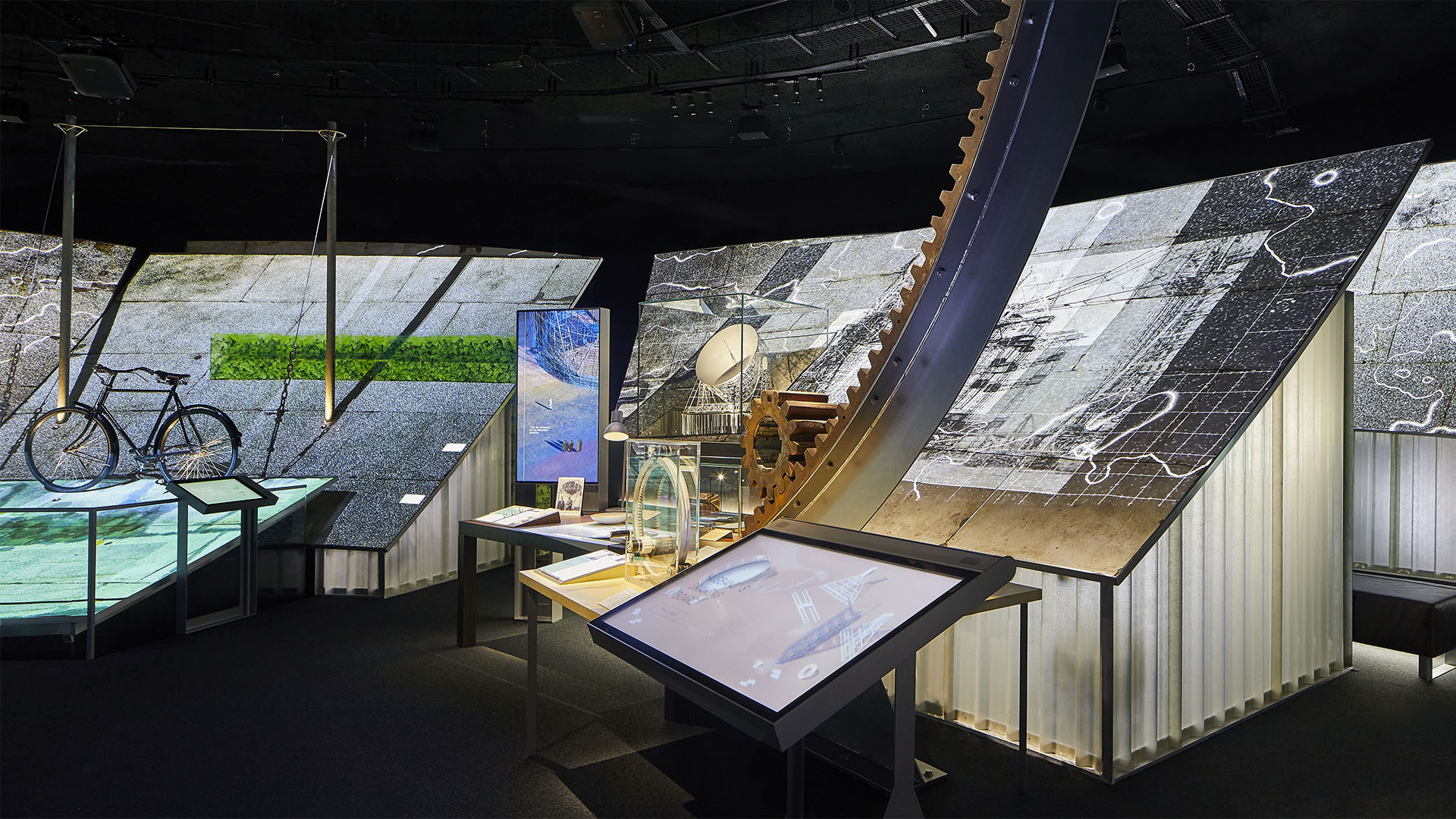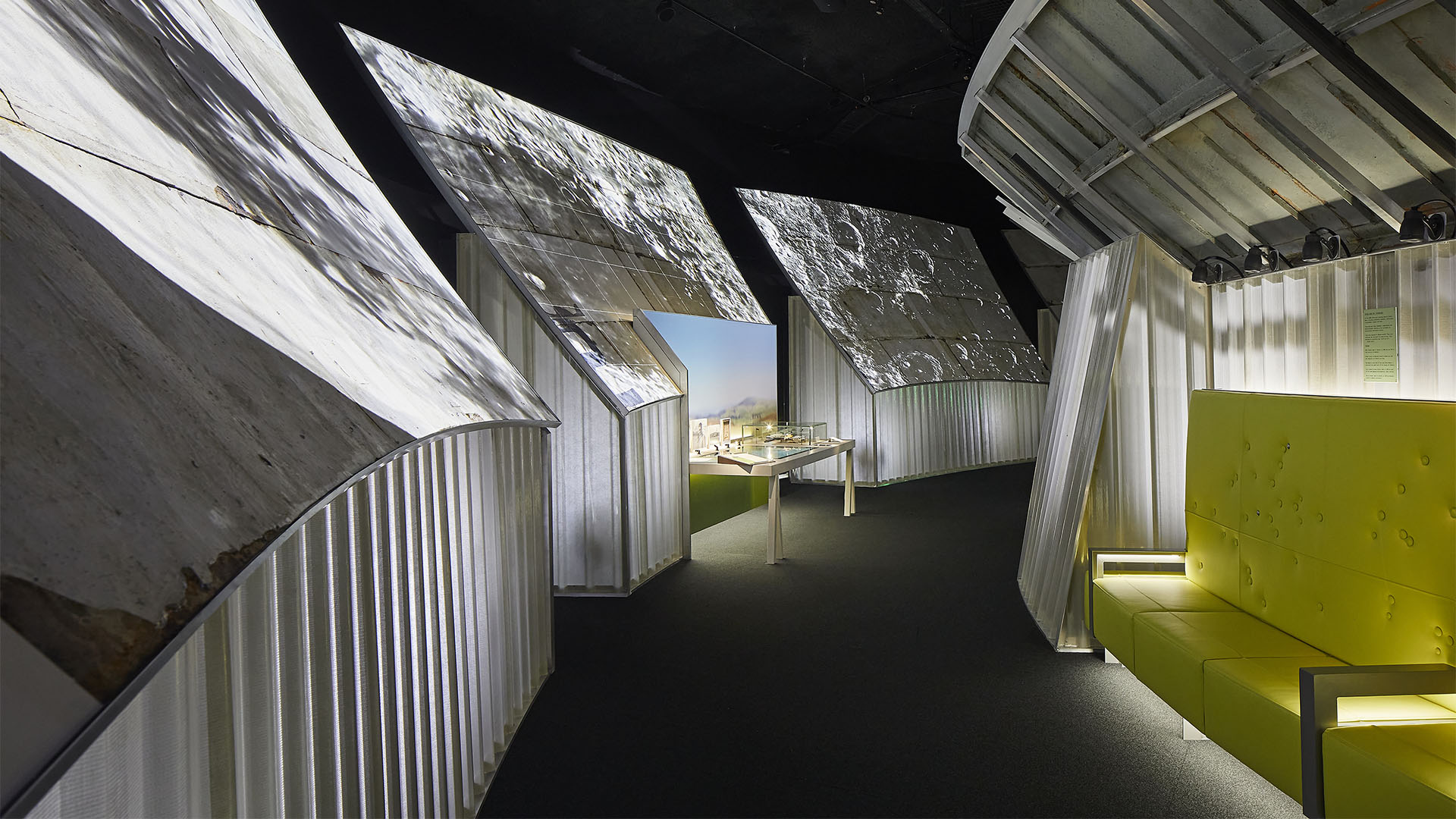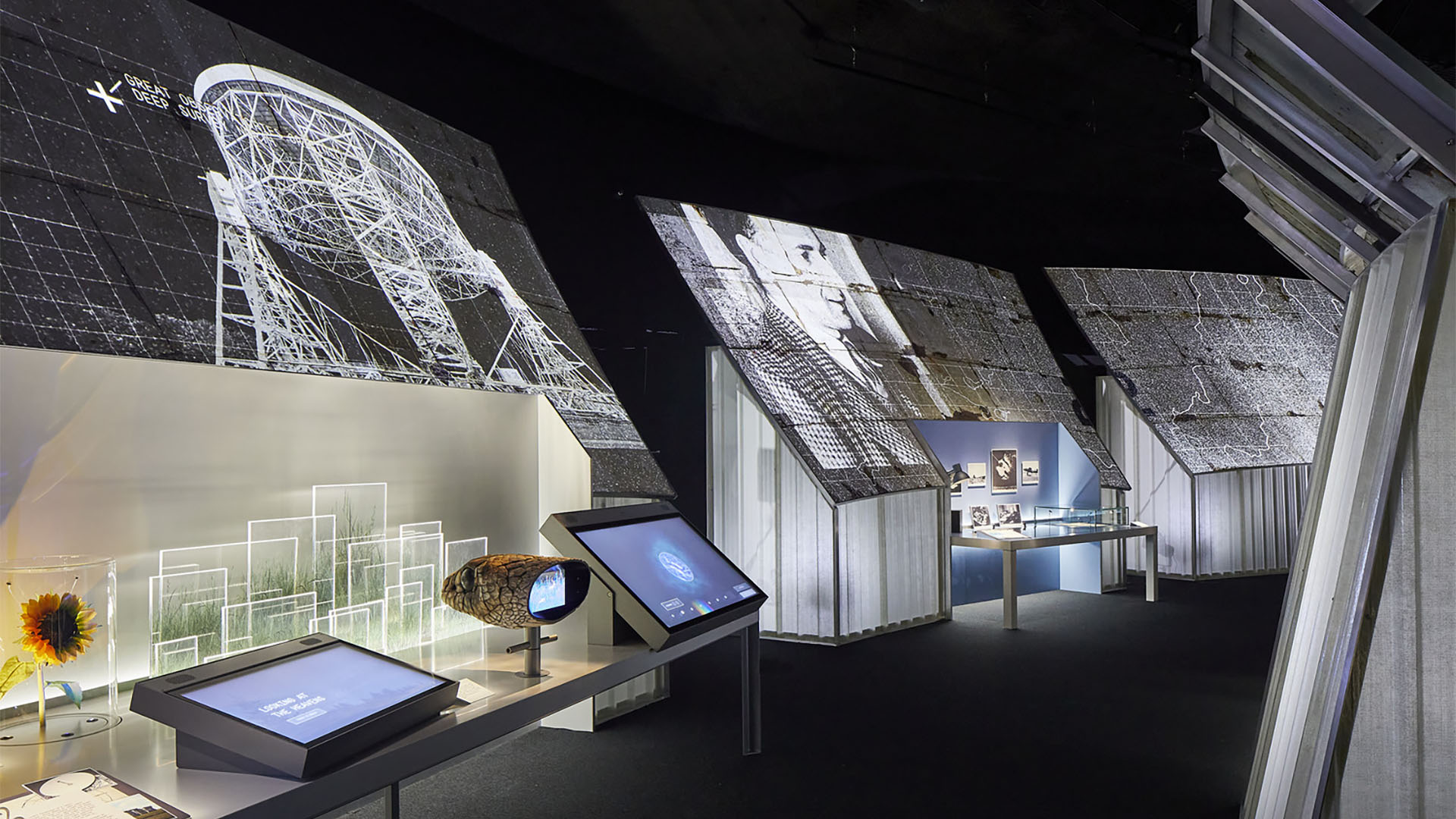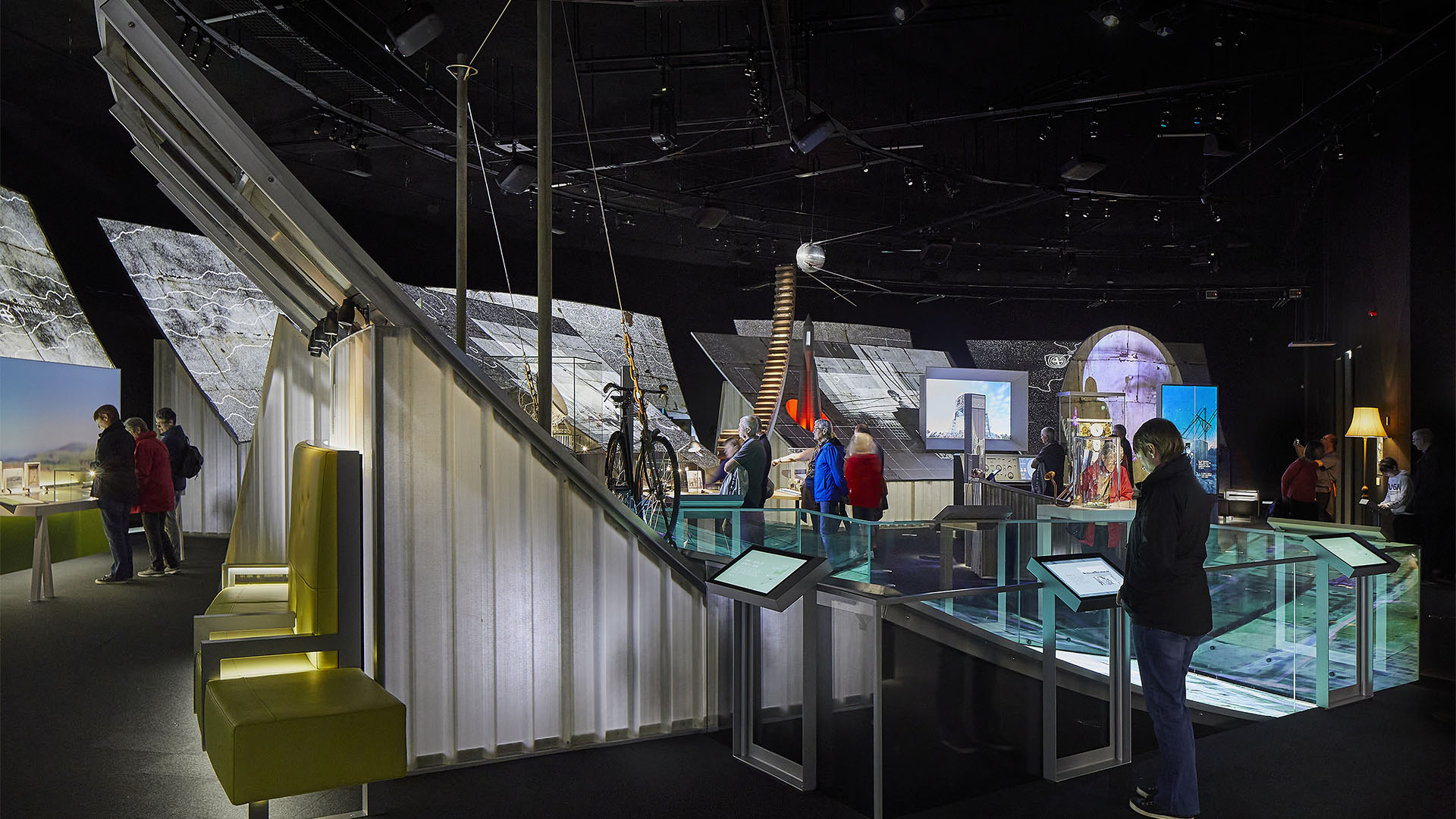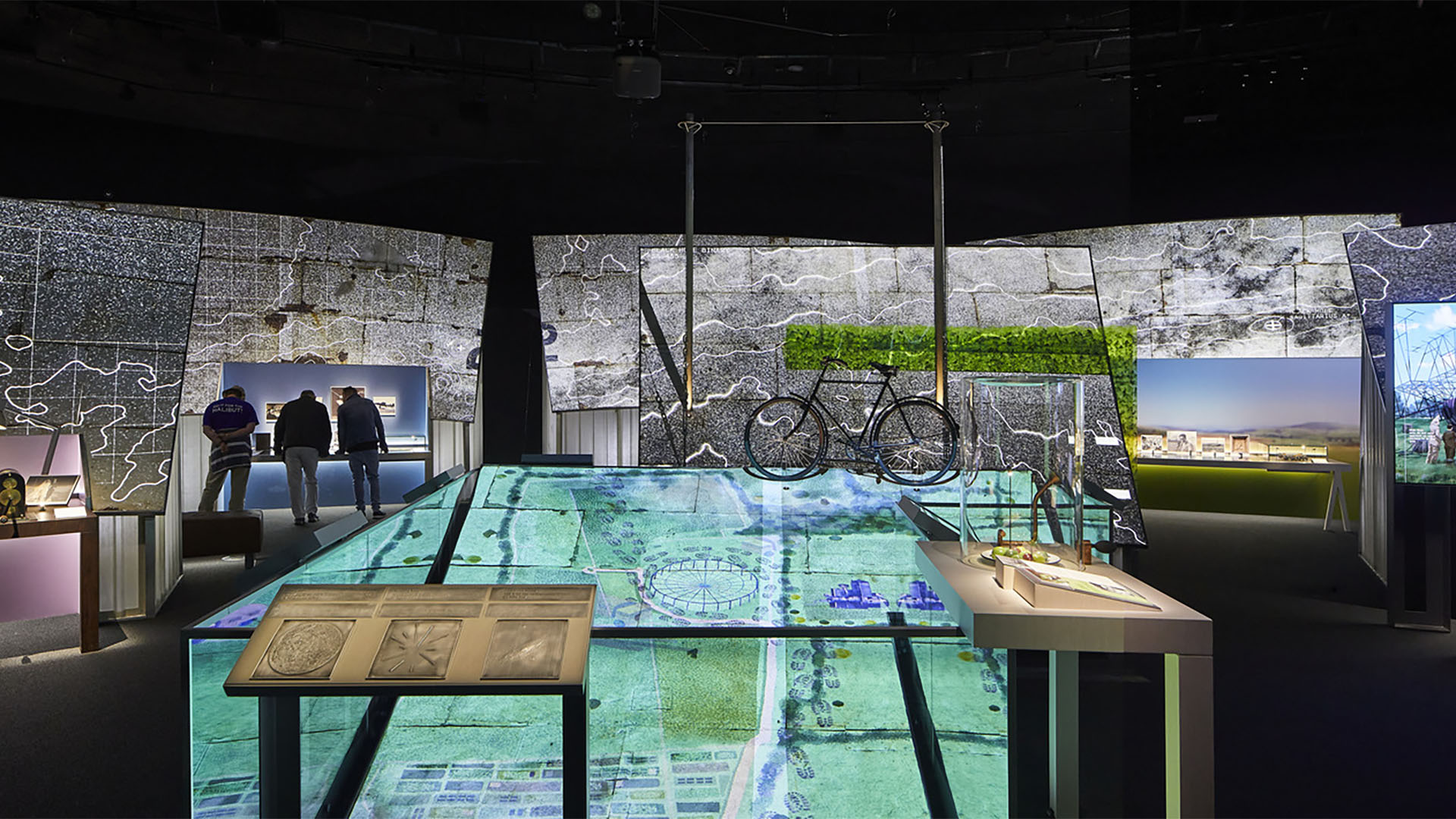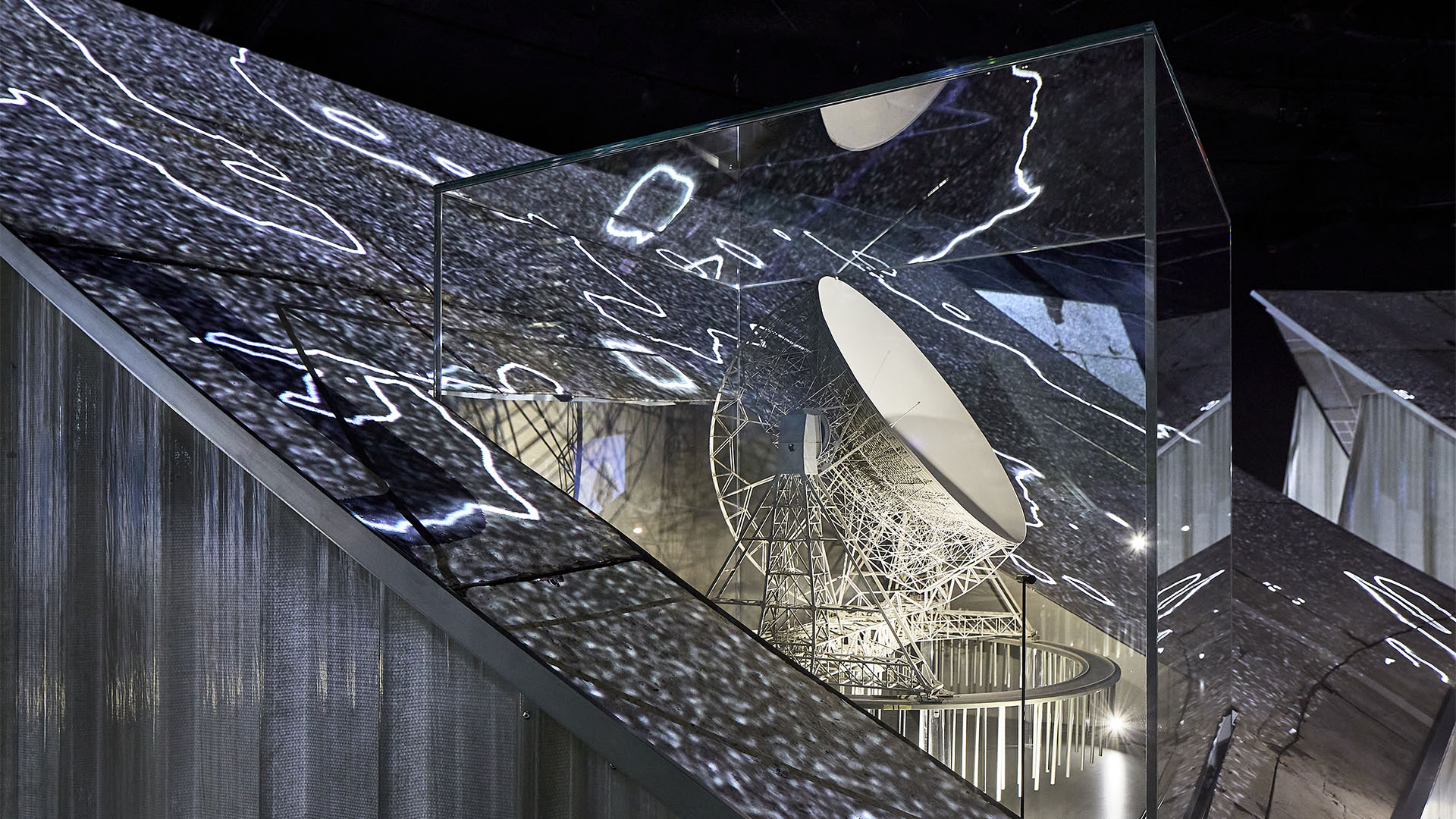First Light Pavilion
Casson Mann created the permanent exhibition for the First Light Pavilion, a purpose-built visitor center at Jodrell Bank Observatory. The fully immersive and interactive exhibition tells the story of the world’s first radio astronomy site and the creation of the giant Lovell telescope from a social and historical perspective.
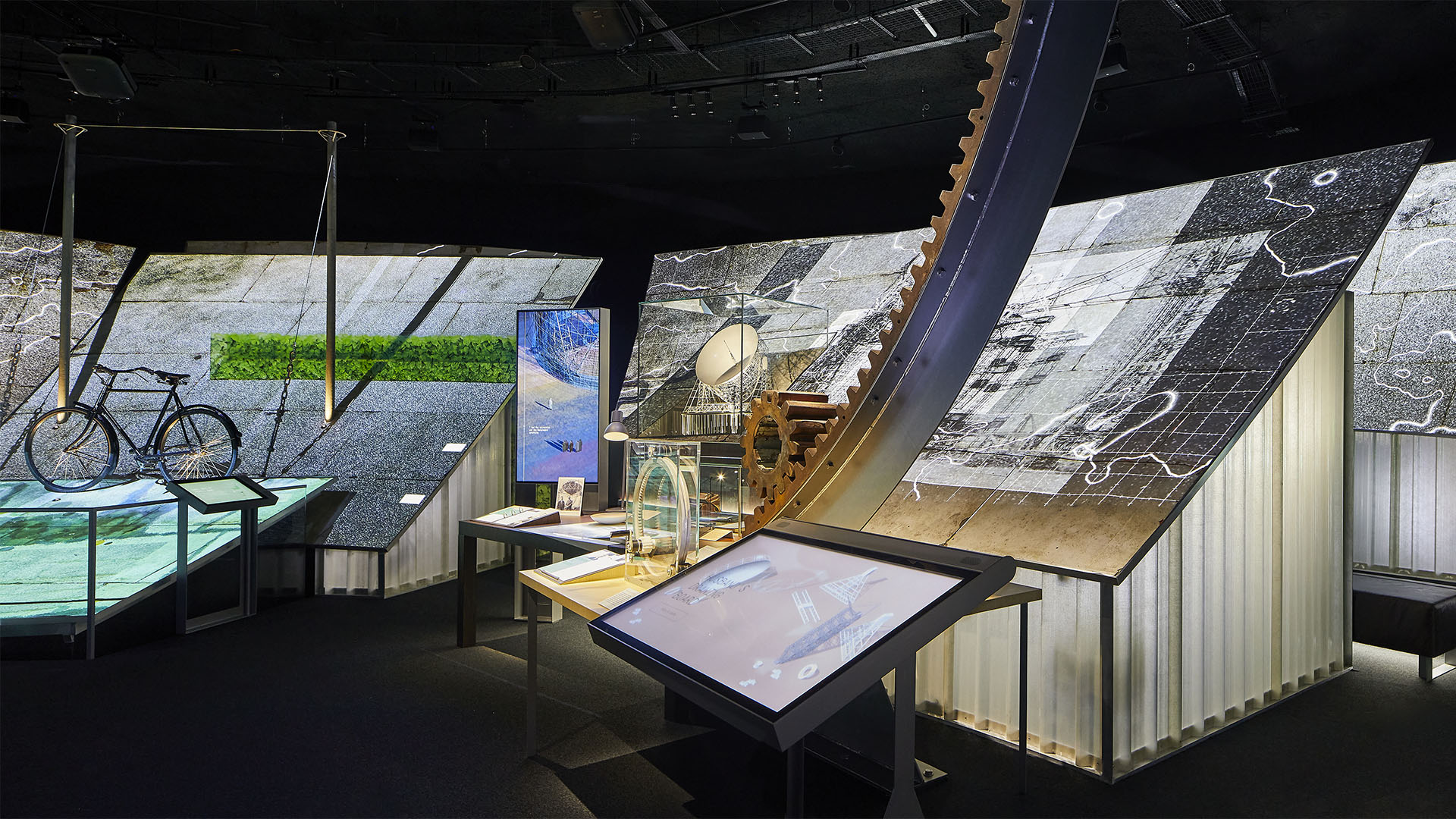
The Challenge
One of the design challenges at Jodrell Bank was how to tell the story with limited physical assets on display and how to make the few artefacts photographs, equipment from science experiments, data, records and logbooks visually interesting and accessible to the public, without considerable interpretation. Fortunately, there is a huge archive of ‘intangible assets’, archive images, film (Pathe and BBC), sounds (like ‘moon-bounces’) and oral histories that provide a fantastic basis for the exhibition narrative. Huge projections, drawing on this original material, create a setting for the story and objects which is anything but ordinary. We captured the spirit of a post-war site: the style of multimedia suggests a patina of age and exhibition fixtures evoke the materiality of the observatory, full of filing cabinets and dusty lever-arch files. The humblest object takes on a new sense of awe and wonder in this environment.
Project Vision
Jodrell Bank became a UNESCO World Heritage Site in 2019, supercharging the need to present its heritage to the same standard as its world-leading science. The project aimed to create a spectacular exhibition narrating the history of Jodrell Bank and engaging wide audiences. The site itself continues to be a working premises too, as Jodrell Bank is part of the University of Manchester and a world-leading researching institute. The First Light building is a new build on the site and it was important that the narrative environment was sensitive towards the existing experiences, while nonetheless offering something new and distinctive. Casson Mann created an exhibition designed to inspire curiosity and wonder. The fully immersive and interactive exhibition presents the human story of Jodrell Bank, the world’s first radio astronomy site and home to the radio telescope that detected quasars, black holes, and Sputnik 1. The patinated dish becomes a dynamic projection surface for multimedia, mapping the earthly stories of Jodrell scientists and the cosmic sphere which they explored. Projections include bicycles used by Jodrell scientists, astronomical charts, and a Sputnik traversing the entire panorama. Casson Mann’s innovative vision for the interior inspired the pavilion architecture. Complementing the dish within the exhibition, the architects designed a circular building in dialogue with the site’s heritage an inverted dome of the same 76m diameter as the Lovell Telescope.

Visitors can touch the dish panels when they first enter the space, but they can also go behind and underneath them to uncover behind-the-scenes stories and enjoy moments of reflection.
Hufton and Crow
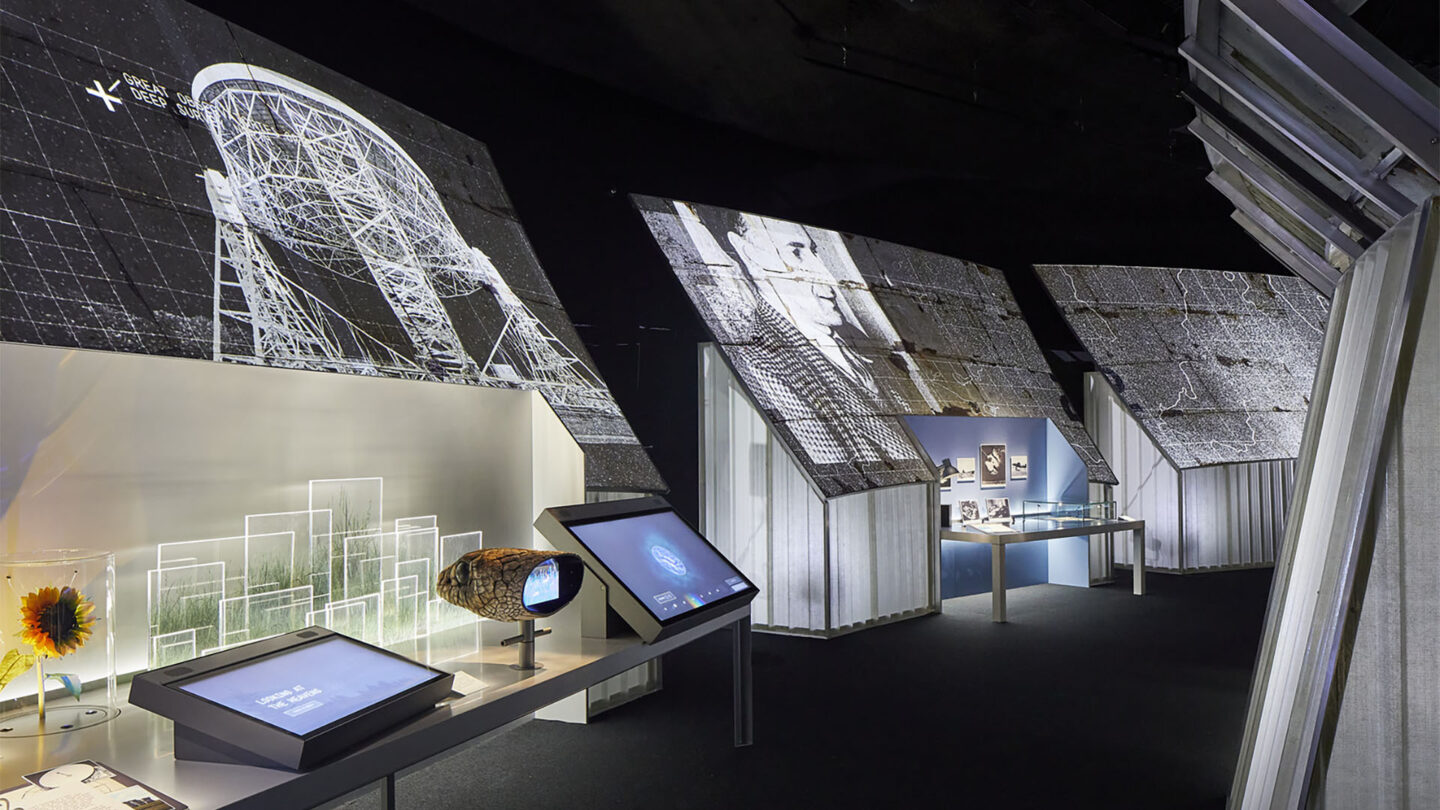
‘Ways of Seeing’ simplifies scientific content in entertaining ways and satisfies key STEM goals by connecting wide audiences with science.
Hufton and Crow
Design + Execution
Casson Mann’s principal aim at Jodrell Bank was to create a memorable and spectacular exhibition, which would do justice to a story of human ingenuity and creativity. Our key design idea, and the greatest challenge, was to incorporate the heritage steel panels from the original dish of the 1957 Lovell Telescope within the fabric of the exhibition. We knew that this would truly set the exhibition apart and offer a spectacular landscape for visitors to explore stories of science.

The multimedia landscape creates an environment that transports visitors to ‘space’, complete with a Sputnik that flies across the entire array of panels.
Hufton and Crow

‘The Fairground’ features a projected map of the site, where visitors explore what happened where and when. The map is animated with imagery: bicycles, a bull, gooseberry bushes, crazy-looking equipment.
Hufton and Crow
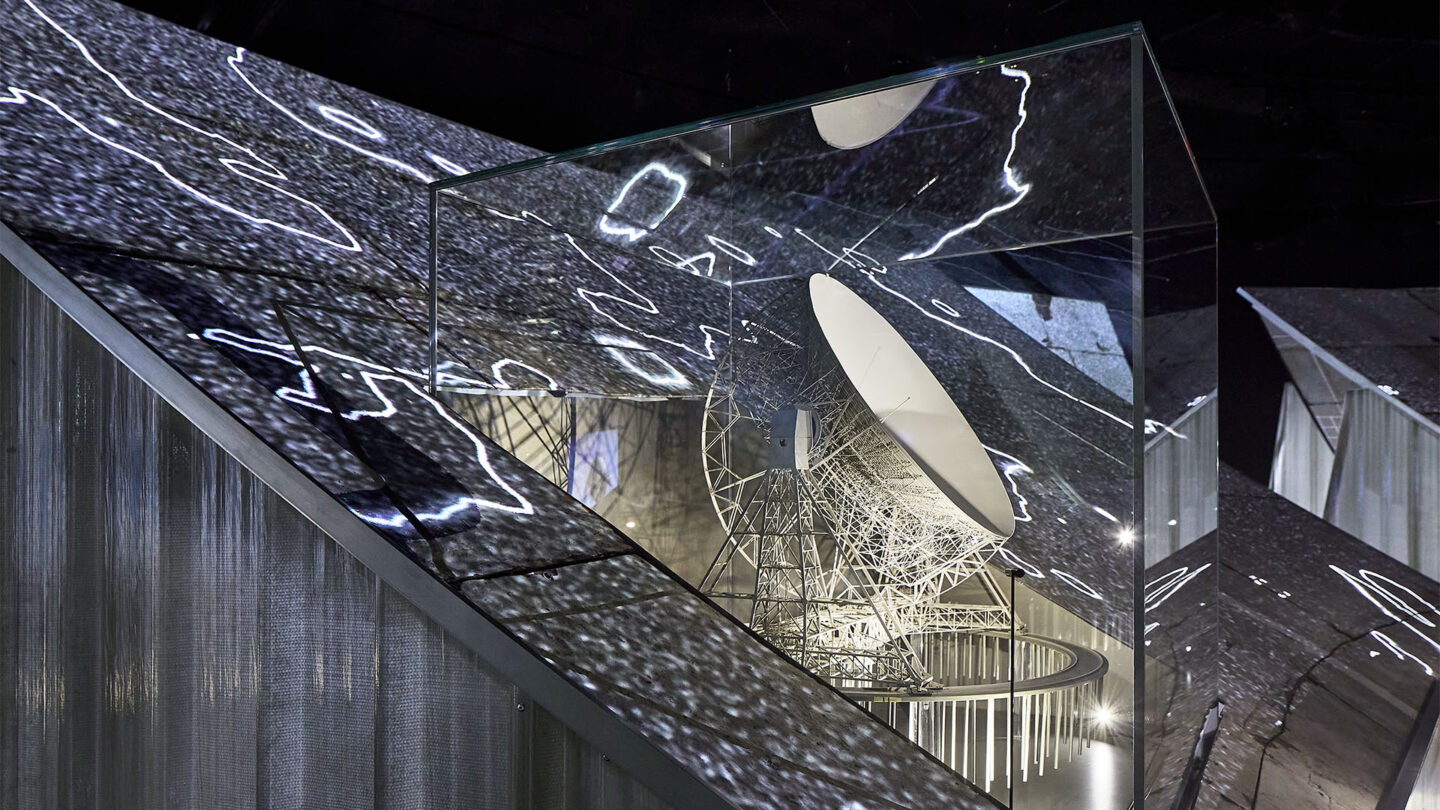
The original scale model of the Lovell Telescope is powerfully lit.
Hufton and Crow

We ensured playful interactives for family groups, including crawl-holes with photo opps and dressing up areas. Here, visitors can climb into a flying saucer.
Hufton and Crow
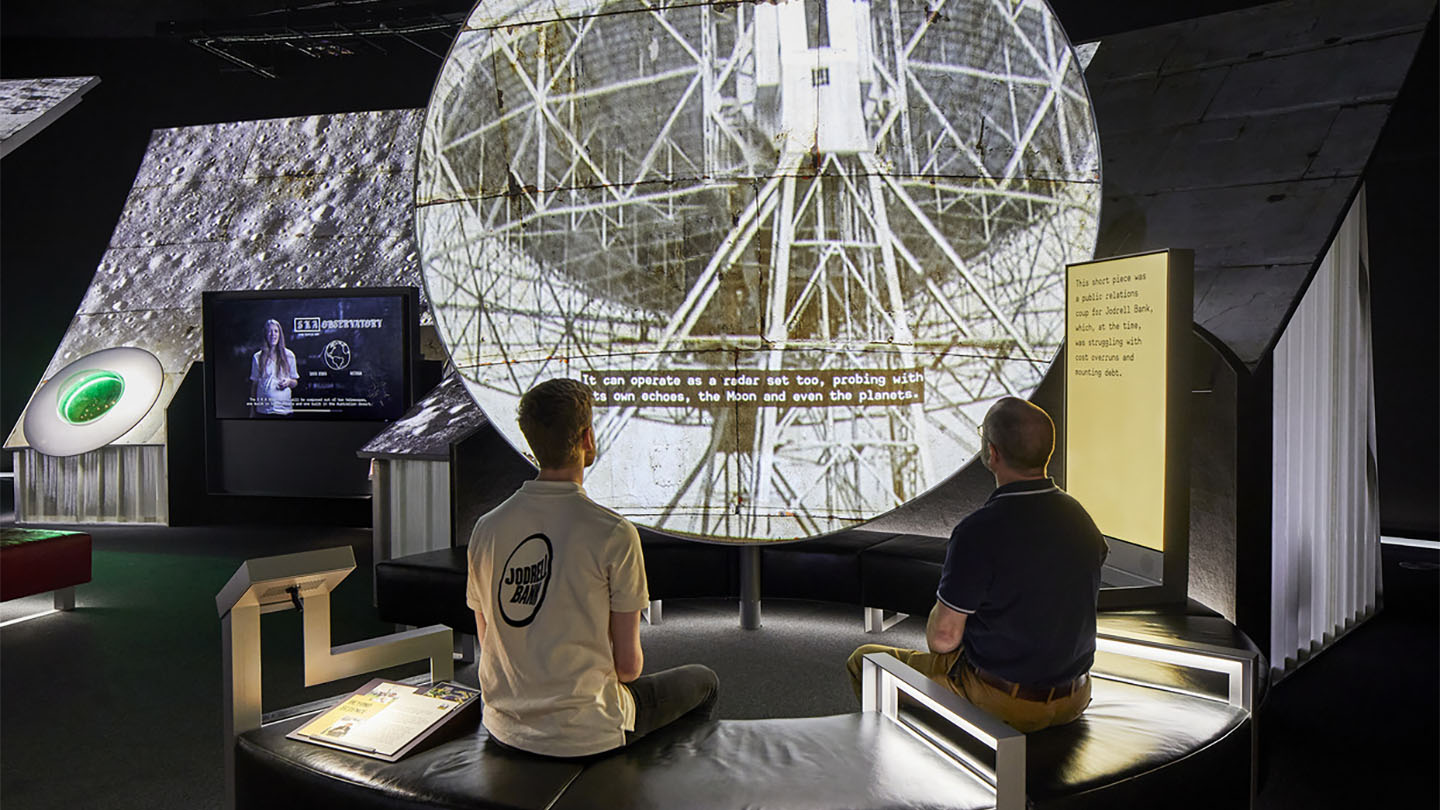
At the end of the exhibition, visitors enjoy a projection which examines the cultural legacy of Jodrell Bank.
Hufton and Crow
Project Details
The project exudes an immediate "wow" factor, notably through its innovative use of dish panels that invigorate the space with excitement and intrigue.
The First Light Pavilion makes innovative reuse of the original sections of the 1957 Lovell Telescope as both an interpretive projection surface and a sculptural element that defines the space of the exhibition.
Design Team
Roger Mann (creative director)
John Pickford (lead design director)
Justin Wilson (senior designer)
Eleonora Francica (designer)
Kirsty Kelso (interpretation)
Hassell Studio (architecture)
Planit-IE (concept landscape consultant)
DEP Landscape Architecture (executive landscape architect)
ORSA (principal designer)
Realm Projects (exhibition)
Electrosonic (exhibition av)
Squint/Opera (exhibition av software design)
ISO Design (exhibition av software design)
Collaborators
DHA Designs (lighting)
Electrosonic (av hardware)
Squint/Opera (av software design)
ISO Design (av software design)
Realm Projects (exhibition contractor)
Photo Credits
Hufton and Crow
Open Date
April 2022
